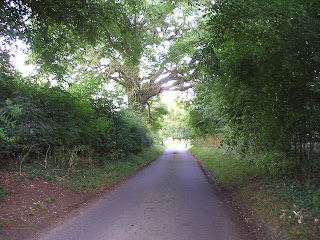A Visit to Bath Abbey
There has been a church on the site of Bath Abbey for over a
thousand years but the present Abbey Church is relatively new by British
ecclesiastical standards. Building
started in 1499 but it was not until the early 1600’s that it was completed. This was due to Henry VIII’s dissolution of
the monasteries in 1539 and the Abbey remained as ruins until 1616 when the
church was repaired; the last of the great medieval churches to be built.
T radition states that the Abbey Church was built after the
then Bishop of Bath dreamt of angels descending – and ascending – to heaven. It is this vision that is first seen as you
enter the building carved into the stonework either side of the West Front. The great flying buttresses were added in the
mid 1830’s to strengthen the building after cracks appeared in the tower; at
the same time the pinnacles were also installed.

In late Victorian times many of Britain’s churches had their
interiors radically altered and Bath Abbey was no exception. Much was removed – the organ and screen were
taken away which has created the breath-taking view down the full length of the
church to the Great East Window, also fitted at this time. Many other windows were fitted with stained
glass and that of the west window was replaced.
Perhaps the most striking of all of the church’s features is
the stone fan vaulting: that of the nave was also created then to match the
earlier ones of the chancel. It soars to
great heights with such delicacy and feeling of light that it is difficult to remember
it is of stone – or imagine the many hours of craftsmanship that the stonemason’s
must have carried out.
Carving of an earlier date, 1649, is the tomb of Sir William
Waller’s wife, Jane. Sir William fought
against the Royalists in the English Civil War and intended to be buried with
her. He was however buried in London.
Much of the information for this post has been gleaned from
the Abbey Church’s excellent website and pamphlets. It is a magnificent building and well worth
allowing plenty of time to visit for there is much to see. It is, of course, in the city centre and
adjacent to the ancient Roman Baths and Georgian Pump Rooms; these featured in
an earlier post which can be seen by clicking here.









Can you even imagine building something like that now? People no longer have that love and respect of God that they did then. It was indeed a labour of love..........and it shows
ReplyDelete....... Happy Spring.......take some pictures of snowdrops for me??? (my next post is going to be on Spring)....I will have to use web pictures you lucky man........Janice
It is extraordinary, isn't it Janice, how these buildings were built all those years ago without the benefits (?) of modern technology. Now, if it was built it would be overdue and over budget, that's for certain. But perhaps it was in those days too!
ReplyDeleteSnowdrops and winter aconites are about to appear on my Facebook page. The aconites are in full bloom now and the snowdrops will peak in about ten days time. We seem to have a lot more aconites in the garden this year, the odd weather conditions must have suited them.
johnson
Did you know Johnson, in your second photo..the bits sticking out of the towers...they perplexed me when I would see them in England on architecture. Doing some research I found they are referred to as "crown of thorns".
ReplyDeleteI am so pleased your winter aconites are about to appear as well as snowdrops. We are deep in snow here in Nova Scotia..but warming up tomorrow to a sunny sky.
I hd no idea they were called that sometimes, Bren.
ReplyDeleteSnow is forecast here tomorrow night but only a little. It is amazing how these early flowers don't care what the weather does.
Keep warm!
Johnson